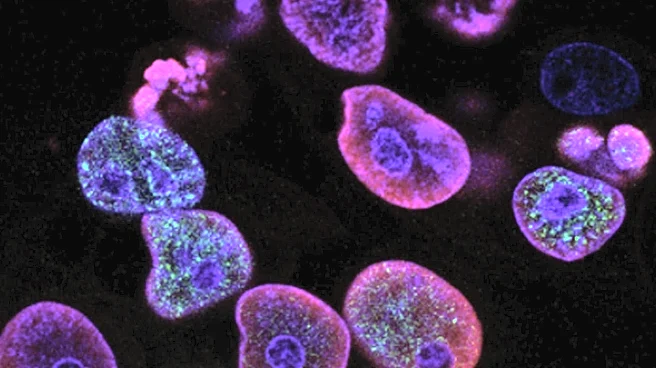What is the story about?
What's Happening?
Recent research has highlighted a potential issue with GLP-1 receptor agonist drugs, commonly prescribed for weight loss and type 2 diabetes, which may affect the interpretation of cancer scans. UK-based researchers have discovered that these medications can alter glucose metabolism and other bodily functions, leading to unique uptake patterns in FDG PET-CT scans. These scans are used to identify areas of high metabolic activity, such as tumors or inflammation. The study, presented at the 38th Annual Congress of the European Association of Nuclear Medicine, found unusual tracer uptake patterns in patients on GLP-1 agonists, which could be misinterpreted as disease if the patient's medication history is not considered. This misinterpretation could lead to unnecessary investigations and inappropriate cancer staging.
Why It's Important?
The findings are significant as they highlight a potential risk of misdiagnosis in cancer patients undergoing FDG PET-CT scans while on GLP-1 receptor agonists. Misinterpretation of scan results could lead to unnecessary medical procedures, incorrect cancer staging, and delays in appropriate treatment, causing additional stress for patients. The lack of national or international guidelines addressing this issue in the UK and potentially in the U.S. underscores the need for increased awareness and updated protocols among healthcare providers. Ensuring accurate interpretation of scans is crucial for delivering timely and appropriate care to patients, avoiding unnecessary anxiety and interventions.
What's Next?
The researchers recommend that imaging teams document patients' medication histories thoroughly to aid in the accurate interpretation of scans. They do not currently advise changing patient preparation or discontinuing GLP-1 agonists before scans. The team plans to expand their research across more imaging centers and collaborate internationally to develop formal guidelines. This effort aims to provide evidence-based recommendations to improve patient care and ensure accurate scan interpretations globally.
AI Generated Content
Do you find this article useful?














